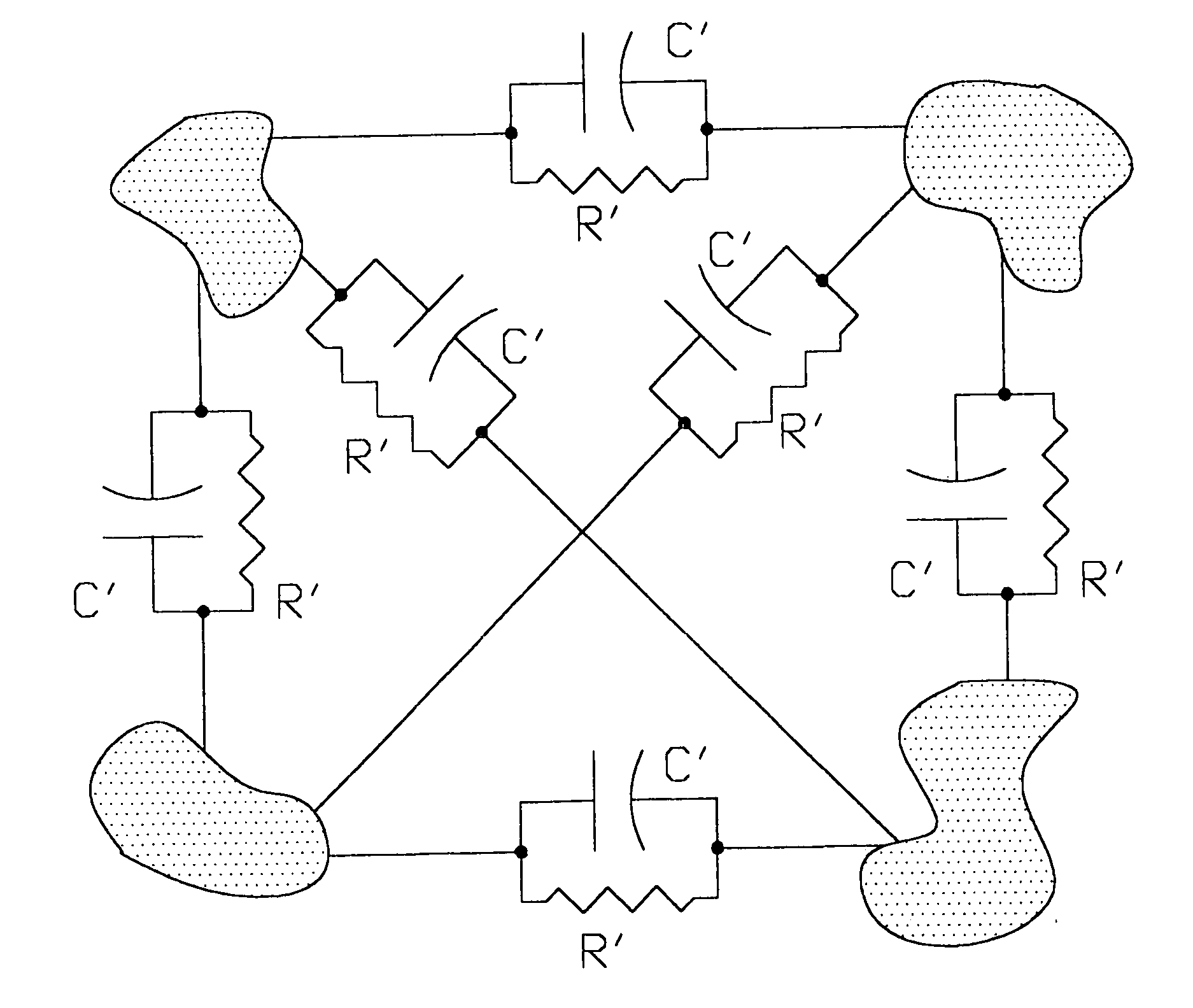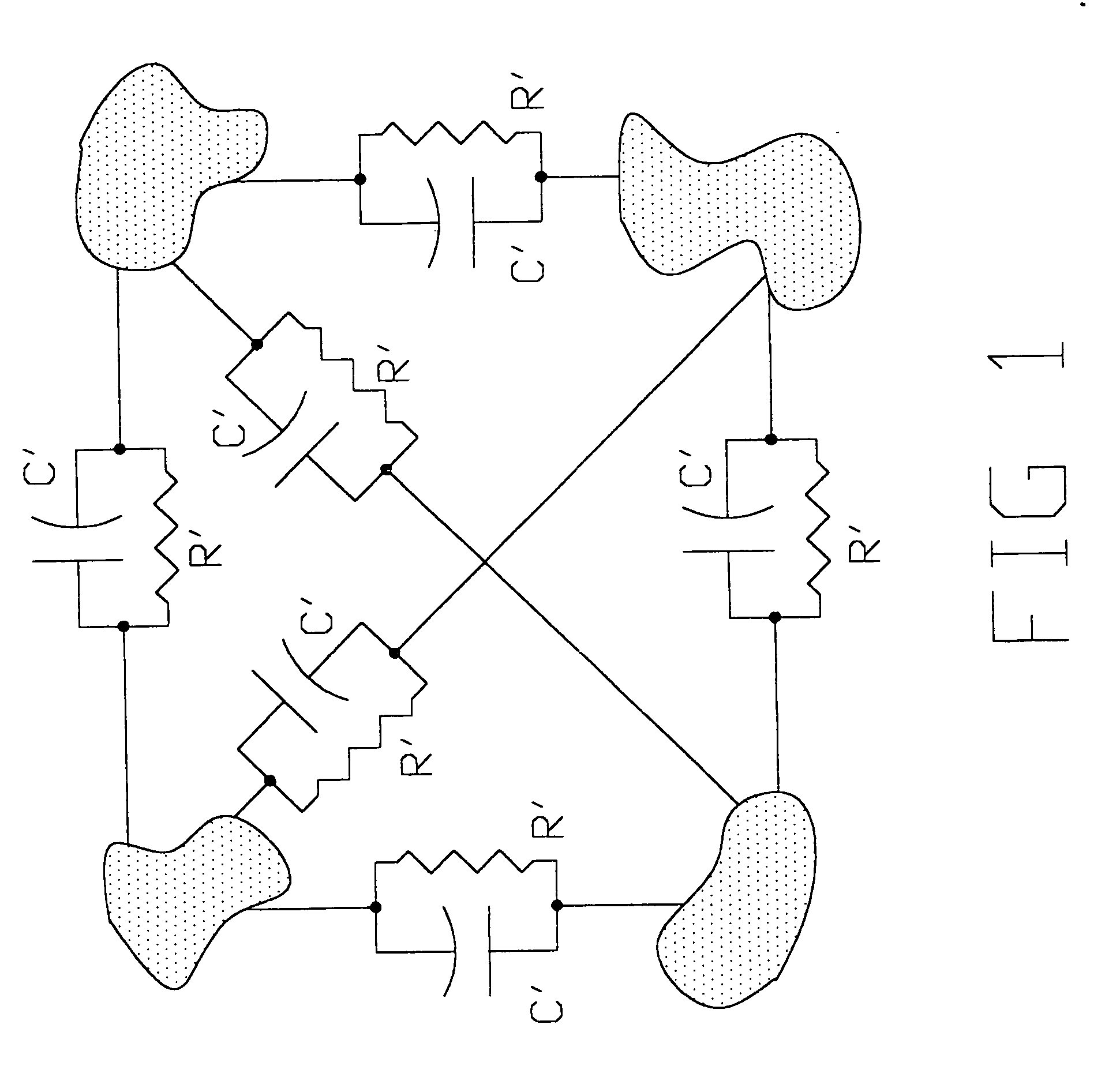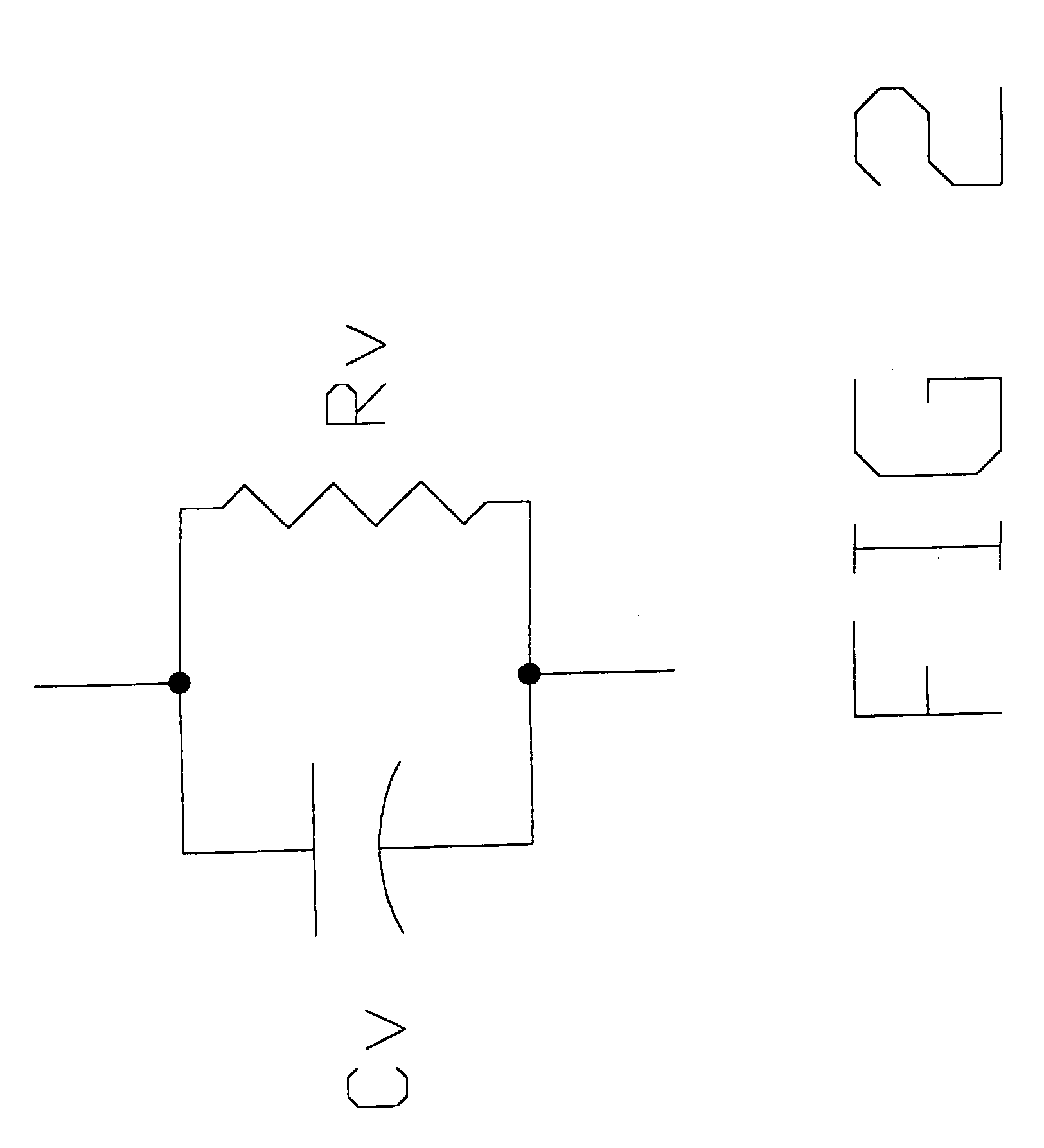Electric field detector
a detector and electric field technology, applied in the field of electric field detectors, can solve the problems of prone to stray capacitive coupling to other bodies, false readings, etc., and achieve the effect of enhancing certain desirable characteristics of free body electric field detectors
- Summary
- Abstract
- Description
- Claims
- Application Information
AI Technical Summary
Benefits of technology
Problems solved by technology
Method used
Image
Examples
Embodiment Construction
[0038] One preferred form of the invention will now be described by way of example, notwithstanding any other forms that may fall within the scope of the invention.
[0039] Referring to FIGS. 5 and 6, the sensor consists of an upper ferrite pole piece (1), a lower ferrite pole piece (7), an insulation washer (5), contact spring (2), fiberglass board (4) and copper sheets (3) and (6).
[0040] The sensor is designed to be an integral part of a printed circuit board, with the fiberglass board (4) being the basic substrate of the printed circuit board. The copper sheets (3) and (6) are specially shaped sections of track on the top and bottom sides of the printed circuit board. The printed circuit board has holes (8) routed in it to allow the lower ferrite pole piece (7) to fit up through it. The copper sheets (3) and (6) are etched so they have a small clearance between their edges and the walls of the lower ferrite pole piece (7), thus ensuring they remain insulated.
[0041] The copper sh...
PUM
 Login to View More
Login to View More Abstract
Description
Claims
Application Information
 Login to View More
Login to View More - R&D
- Intellectual Property
- Life Sciences
- Materials
- Tech Scout
- Unparalleled Data Quality
- Higher Quality Content
- 60% Fewer Hallucinations
Browse by: Latest US Patents, China's latest patents, Technical Efficacy Thesaurus, Application Domain, Technology Topic, Popular Technical Reports.
© 2025 PatSnap. All rights reserved.Legal|Privacy policy|Modern Slavery Act Transparency Statement|Sitemap|About US| Contact US: help@patsnap.com



